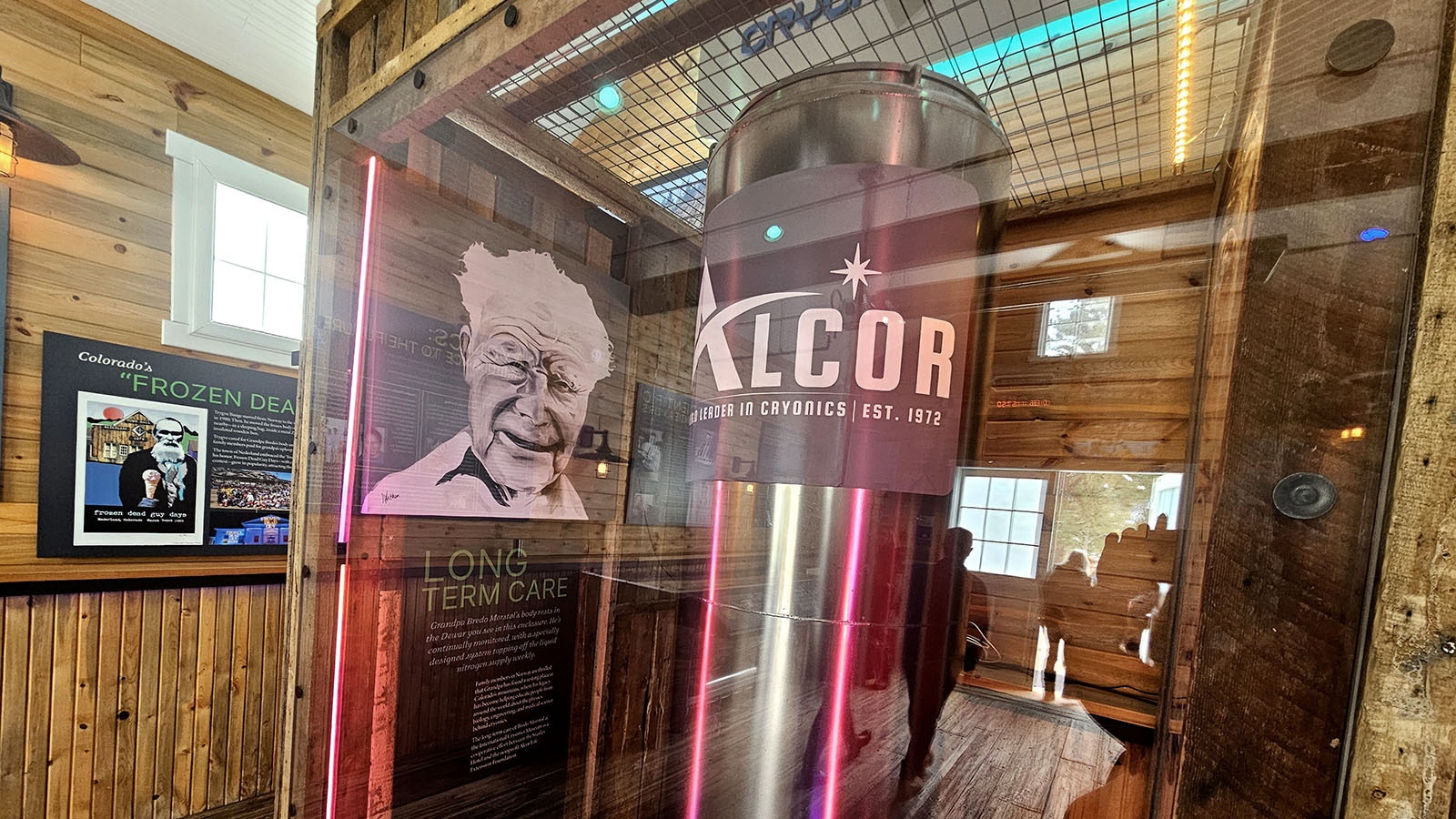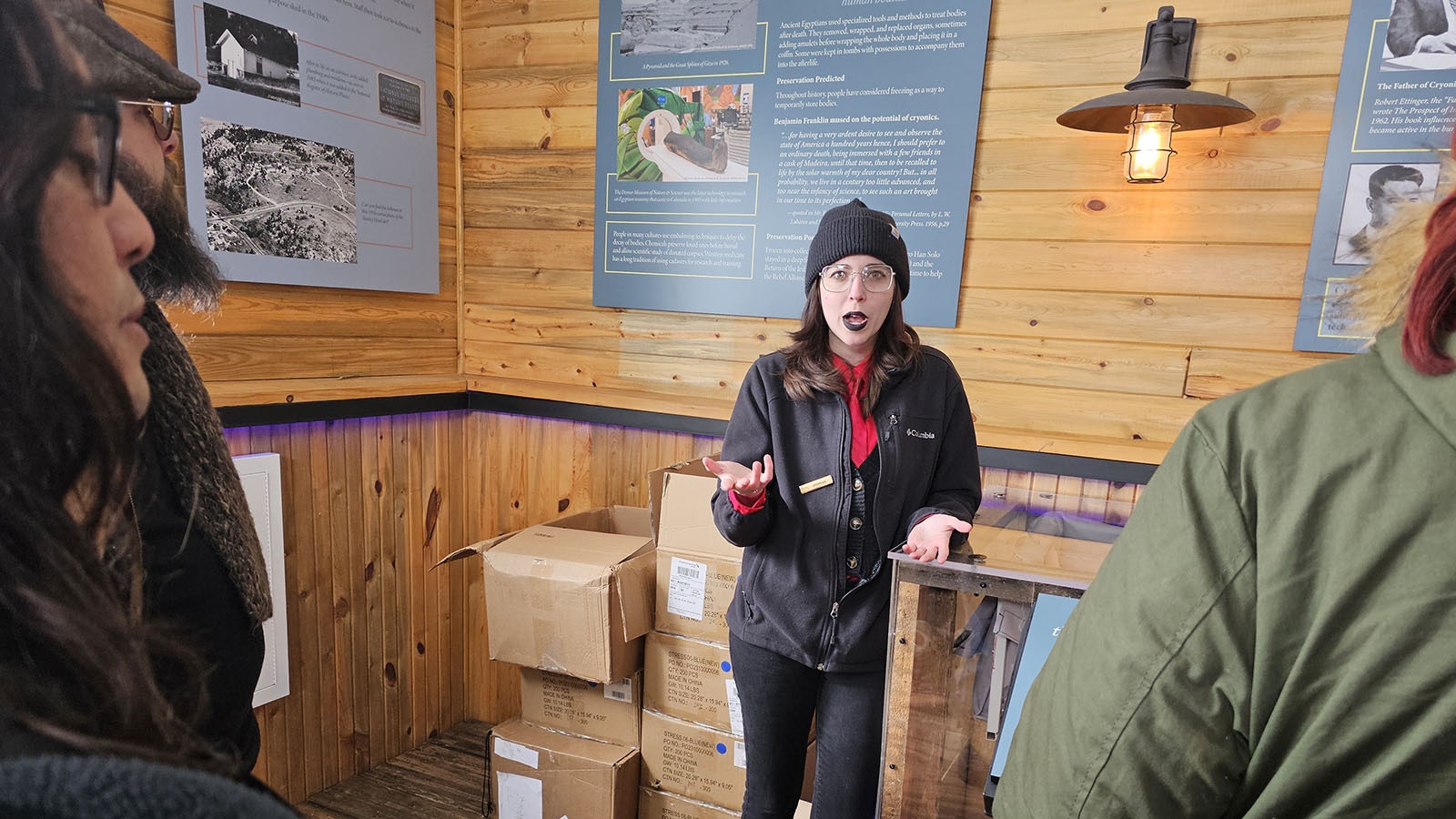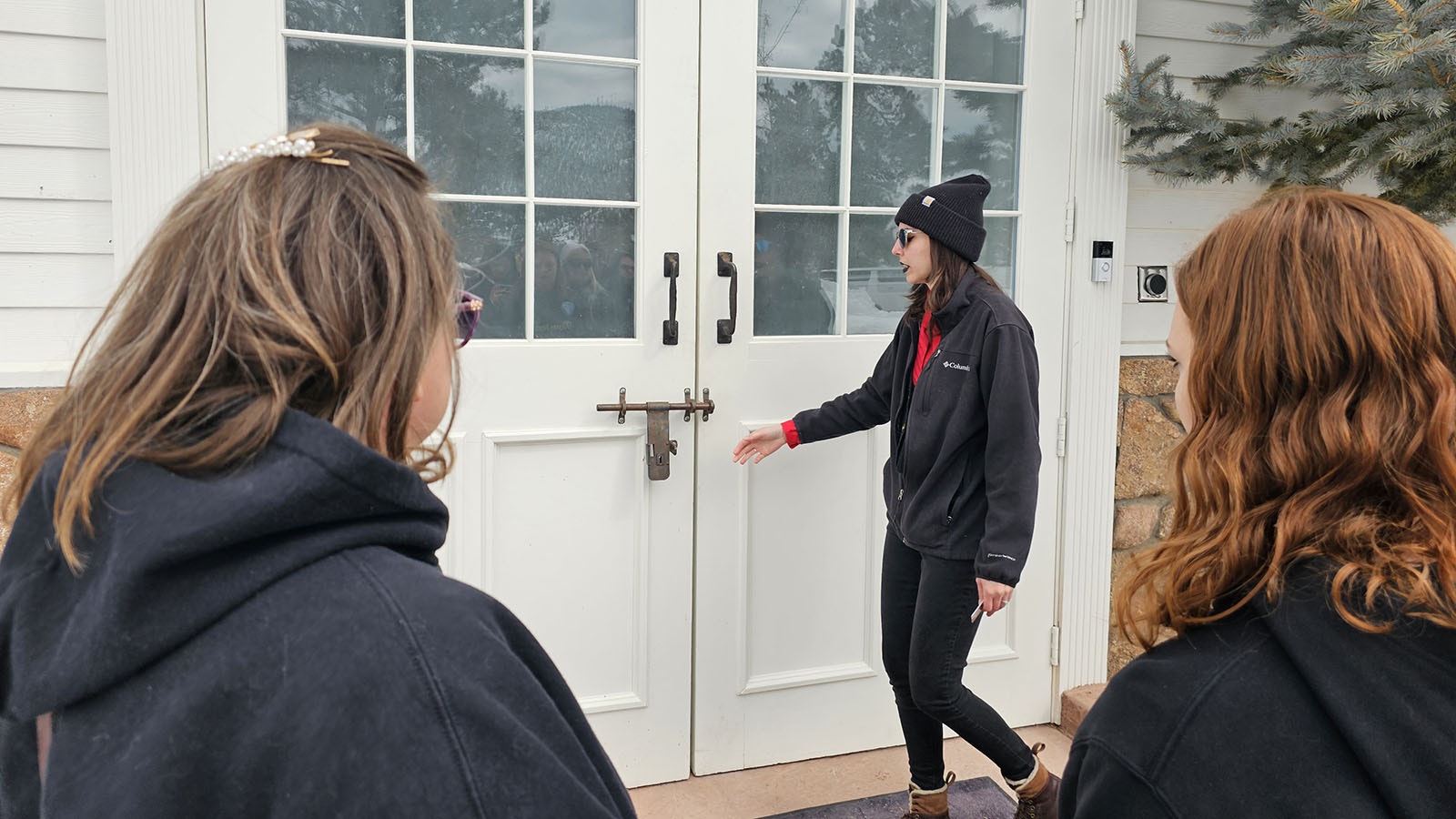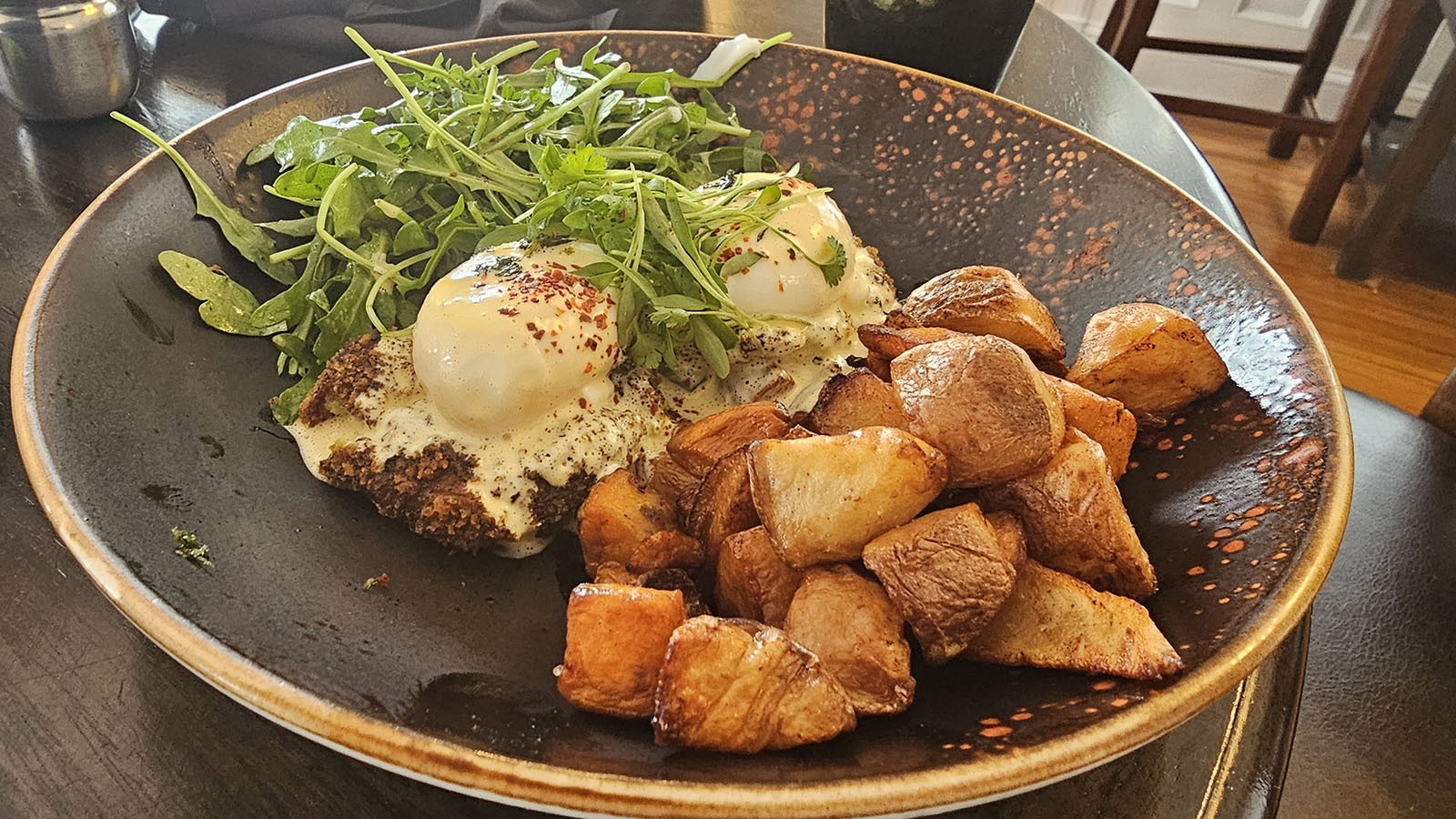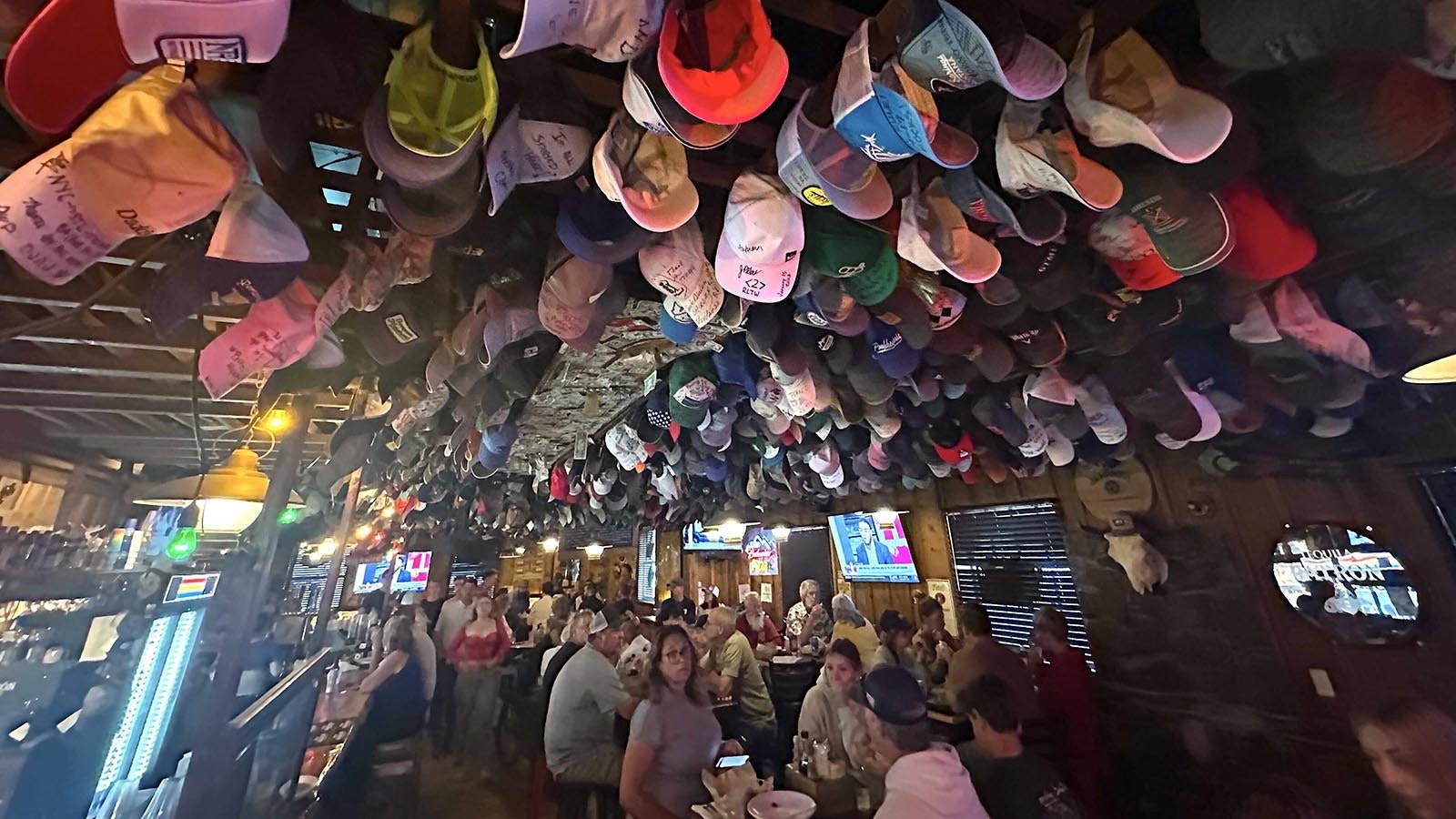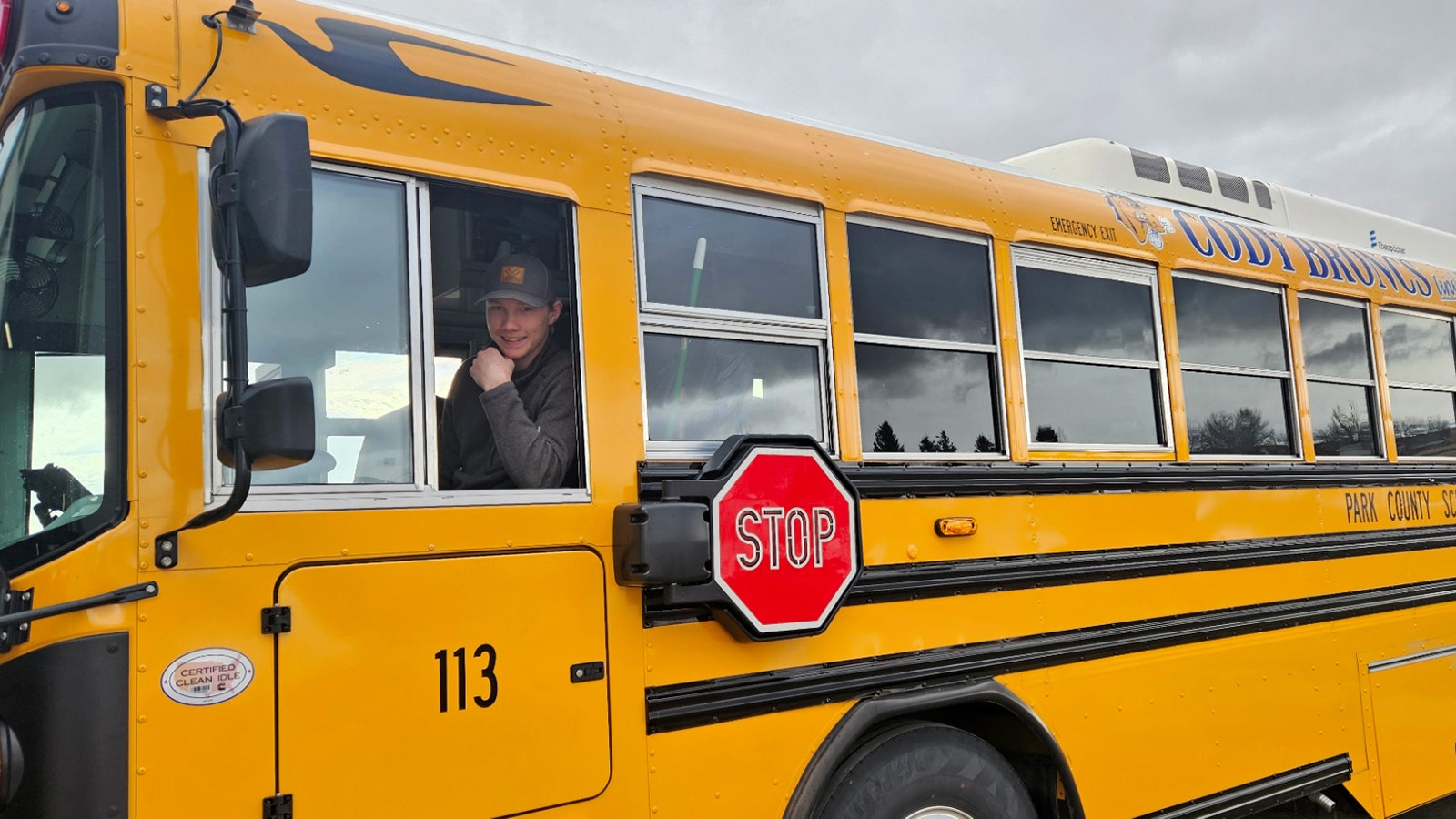ESTES PARK, Colo. — A ghost boy named Billy was once said to haunt the Stanley Hotel’s icehouse. He would show up now and then in photographs as a kind of unexplainable blur.
But a new spirit now inhabits the 1909 icehouse that Freelan Oscar and Flora Stanley built to supply what was once their hotel, located just two hours south of Cheyenne. And it is a spirit that visitors won’t need to interpret in fuzzy photography anymore.
Indeed, the image of the new spirit is sharp and crisp — a larger-than-life mugshot of Bredo Morstol’s smiling face, staring straight at a silver metal tube called a “dewar,” which now contains his frozen body.
Morstol, the patron saint of Frozen Dead Guy Days, which has found a new home in Estes Park, is now the center of the Stanley Hotel’s newest exhibit, the International Cryonics Museum.
Cryonics is the technique of deep-freezing a person just after death in the hope that scientific advances will one day allow that person to be revived.
Those going on the Frozen Dead Guy Tour at The Stanley are warned ahead of the tour that they’ll be going into the hotel’s once haunted icehouse, and that the icehouse does now contain an actual, cryonically frozen person.
“We made the mistake once of not mentioning that on the first Frozen Dead Guy tour that we gave,” the tour guide says. “And we’re never going to make that mistake again.”
Morstol’s picture and his dewar — pronounced do-war — have been positioned so that they’re the first thing guests see as they enter the new museum, which also includes educational material about cryonics and Alcor, a Scottsdale, Arizona, nonprofit that studies the science of cryonics. Alcor helped professionally recover Morstol’s body from the Tuff Shed in Nederland where it has been stored the last 20 or so years and bring it to the Stanley Hotel.

Getting The Stanley Set For The Next 50 Years
The Stanley Hotel has long embraced its haunted history, as well as the fact it was the setting that inspired Stephen King to write his famous horror novel “The Shining,” which eventually inspired the cult classic movie of the same name directed by Stanley Kubrick and starring Jack Nicholson.
That haunted embrace was largely the vision of the hotel’s present owner, John Cullen, the first in a string of 20 or so hopeful hotel owners to actually turn The Stanley into a money-maker.
In fact, even the hotel’s original owner, F.O. Stanley, often opined how he would come to Estes Park each summer with $30,000 in his pocket and leave with just $15,000.
But unlike most of the hotel’s previous owners, Cullen isn’t afraid to use the hotel’s haunted past or its ties to “The Shining.”
In fact, he played up the suite where Steven King stayed, Room 217, and offering it as one of the hotel’s premium stays, along with other haunted rooms such as Room 401, the Dunraven Suite, said to be the hotel’s most haunted, and Room 418, where guests claim to have heard laughing children who sometimes pull the bedcovers off guests.
By embracing all of that, Cullen has pulled off a hat trick that’s been working for going on 27 years.
But clearly, with the 50th anniversary of the movie “The Shining” nearing in a not-so-distant 2030, Cullen is thinking ahead again, figuring out new ways to offer new experiences to the fan base that already loves The Stanley experience.
He recently sold the Stanley to a nonprofit, a $475 million deal that helped the hotel qualify for an $11.5 million grant to build what will be called the Stanley Film Center.
The center will include a world-class auditorium for film premieres, festivals and awards ceremonies, according to media materials, as well as a 13,000-square-foot film discovery center to exhibit cinema artifacts.
A recent announcement makes it clear this new film center is going to focus on horror films. Horror Studio Blumhouse has been tapped to curate the center’s exhibit space, in a collaboration with the Colorado Office of Film, Television and Media.
It’s a move that promises to turn the Stanley Hotel into a future epicenter for horror-film enthusiasts, many of whom already clearly love the blend of horror, history and elegance that The Stanley does so well.
Enter Morstol, Stage Left
The addition of Bredo Morstol to The Stanley Hotel’s lineup of curious, and sometimes macabre, experiences appears to have been a bit serendipitous.
Requests for an interview with Cullen about the new museum and film center at the Stanley Hotel were not answered before this story was published, but Cullen reportedly paid $250,000 for the Frozen Dead Guy Days festival, according to media reports, after the festival and the nearby town of Nederland had a falling out in 2022.
Nederland officials estimate that 20,000 to 30,000 people showed up for the event in 2022 — too many for the town of 1,500 to handle.
After bringing the festival to Estes Park, keeping just the rights to the Blue Ball for The Stanley, Cullen also negotiated a new home for Morstol with the family and with partner, Alcor.
Thanks to that partnership, Bredo is now being stored in a bath of liquid nitrogen instead of dry ice, which puts him at a much colder minus 202 degrees than dry ice, which is at minus 110 at its coldest.
Bredo is also being constantly monitored by Alcor using remote technology, and data is being collected that Alcor CEO James Arrowood told Cowboy State Daily will help advance the science of cryonics for generations.
The museum itself is a world-first, not far from Wyoming’s border, for a one-of-a-kind stay in the backyard of the Rockies.
Tourists who visit the museum can even try on the “dewar” next to Bredo’s if they like, taking selfies inside it with family and friends.
No one needs an icehouse anymore, the Frozen Dead Guy tour guide pointed out near the end of the tour, as participants stepped into the dewar for their own selfies.
But F.O. Stanley couldn’t have made it more perfect for the purpose of a cryonics museum, even if he’d known what was ahead.
The facility Stanley built was designed like other icehouses of the day, to trap cold air, which sinks, and evacuate hot air, which rises.
That makes this a cool little tour no matter the time of year, one that clearly leans into the horror fan base that already loves The Stanley, giving them an all new and chillingly de-frightful experience.
Contact Renée Jean at renee@cowboystatedaily.com
Renée Jean can be reached at renee@cowboystatedaily.com.

